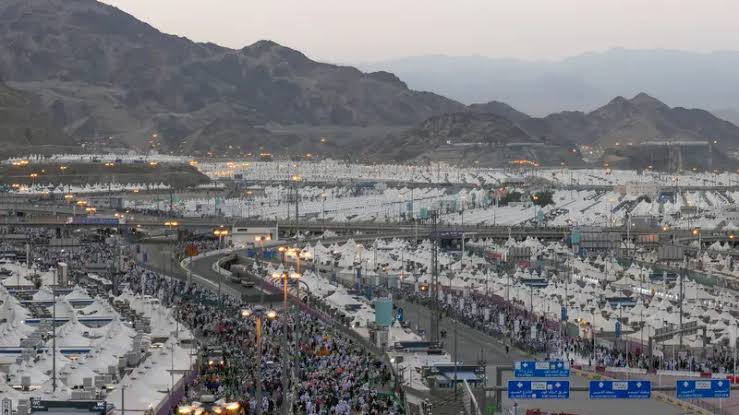Eid al-Adha is often remembered for its hallmark rituals: the communal prayers and the symbolic sacrifice of animals. However, as the sun sets on the 10th of Dhul-Hijjah, a spiritually rich period known as the Days of Tashriq begins. Far from being a mere continuation of Eid festivities, the 11th, 12th, and 13th of Dhul-Hijjah represent a sacred phase filled with devotional practices, specific legal rulings, and meaningful cultural expressions. For those new to Islam, exploring the Days of Tashriq offers a more complete view of the Islamic spiritual calendar and deepens appreciation for the religion’s rhythm of worship.
The Etymology and Significance of Tashriq

The term Tashriq is derived from the Arabic root sharaqa, which means “to rise” or “to illuminate,” typically used in reference to sunrise. Historically, it referred to the process of drying the meat of sacrificial animals under the sun during the pilgrimage season—an early method of preservation. This practical origin connects the days to themes of sustenance, gratitude, and mindful consumption.
More significantly, the Days of Tashriq are marked by heightened spiritual activity. Muslims are encouraged to recite Takbir al-Mutlaq and Takbir al-Muqayyad—expressions of “Allahu Akbar”—throughout this period. These constant verbal affirmations of God’s greatness help maintain a state of remembrance and gratitude, reinforcing a sense of divine mindfulness beyond the Eid prayer itself.
The Prohibition of Fasting: A Divine Mercy
A defining feature of the Days of Tashriq is the explicit prohibition of fasting. In accordance with the guidance of the Prophet Muhammad (peace be upon him), these days are intended for nourishment, festivity, and remembrance of Allah. The hadith emphasizes: “They are days of eating, drinking, and remembering Allah.” This divine concession reflects Islam’s balanced approach to spirituality—where joy, sustenance, and reflection coexist harmoniously.
Following the solemnity of the Day of Arafah and the spiritually intense rituals of Eid, the Days of Tashriq offer a space to rejoice in Allah’s mercy, partake in communal blessings, and share the bounty of qurban meat. Far from being indulgent, this celebration of food and fellowship reinforces the Islamic ideal that religious devotion includes gratitude and enjoyment of lawful blessings.
Continuing the Sacrifice: A Window of Opportunity
While the primary act of qurban takes place on the 10th of Dhul-Hijjah, Islamic jurisprudence permits the sacrifice to be performed until the conclusion of the Days of Tashriq. This flexibility accommodates logistical needs, allowing communities with large numbers of animals or limited resources to fulfill the obligation across a wider timeframe.
This extension highlights the inclusivity and practicality embedded in Islamic law. More importantly, it underscores the enduring nature of the sacrificial spirit—encouraging believers to continue sharing, giving, and uniting beyond a single day. It serves as a reminder that devotion is not confined to rituals, but expressed in sustained acts of compassion and generosity.
Commemorating Abraham’s Trial: Lessons in Submission
The Days of Tashriq are deeply rooted in the narrative of Prophet Ibrahim’s (Abraham’s) unwavering obedience to Allah’s command to sacrifice his son, Isma’il (Ishmael). This foundational story, culminating in Allah’s substitution of a ram for Isma’il, embodies themes of faith, submission, and divine mercy.
These days offer believers an opportunity to reflect on Ibrahim’s trial, reinforcing the importance of trust in divine wisdom, patience through difficulty, and the essence of Islam—complete submission to the will of God. For pilgrims performing Hajj, this period includes the ritual of Ramy al-Jamarat, symbolizing the rejection of Satan’s temptations. By reenacting Ibrahim’s defiance of evil, pilgrims—and Muslims globally—strengthen their commitment to righteousness and moral clarity.
Cultural Expressions: A Global Tapestry of Devotion
While the Days of Tashriq are defined by specific religious mandates, their cultural expressions vary across the Muslim world, weaving a rich tapestry of tradition. Many communities celebrate by organizing family gatherings, preparing meals with qurban meat, and dedicating time to social and religious fellowship. Culinary traditions reflect regional identities—from Middle Eastern kebabs to North African stews and Southeast Asian curries—all centered around shared meals that promote hospitality and gratitude.
In Indonesia, these days are marked by vibrant communal participation. After the distribution of qurban meat, families often come together to grill and enjoy the food. In pesantren (Islamic boarding schools), students and teachers engage in collective cooking, strengthening bonds of brotherhood. In some regions, additional practices such as visiting elders, joining dzikir (remembrance) circles, or hosting local religious gatherings further highlight the integration of Islamic values with local culture. These diverse practices demonstrate Islam’s harmony with local traditions, enhancing both spiritual meaning and communal unity.
The Essence of Gratitude and Remembrance
At their heart, the Days of Tashriq embody the values of gratitude, remembrance, and continuity. They help believers transition from the intense spiritual peaks of Hajj and Eid back into daily life while retaining the momentum of devotion. The continued recitation of Takbir serves as a spiritual anchor, reminding Muslims of Allah’s greatness and the countless blessings bestowed upon them.
These days encourage a holistic view of faith—one that embraces worship through joy, reflection through community, and devotion through thankfulness. By combining acts of celebration with consistent remembrance, they cultivate a balanced spirituality that is both grounded and uplifting.
A Lasting Legacy of Reflection and Celebration
Although the Days of Tashriq may receive less attention than Eid al-Adha itself, they represent a vital and spiritually enriching period in the Islamic calendar. These days blend ritual discipline with communal celebration, nourishing both body and soul. By honoring the prohibition on fasting, engaging in acts of devotion, and extending the spirit of sacrifice, Muslims are reminded of Islam’s complete vision—one that encourages both restraint and rejoicing.
As the echoes of Eid fade, the Days of Tashriq offer a sacred opportunity for reflection, gratitude, and unity—leaving a profound spiritual imprint on those who embrace their essence.







